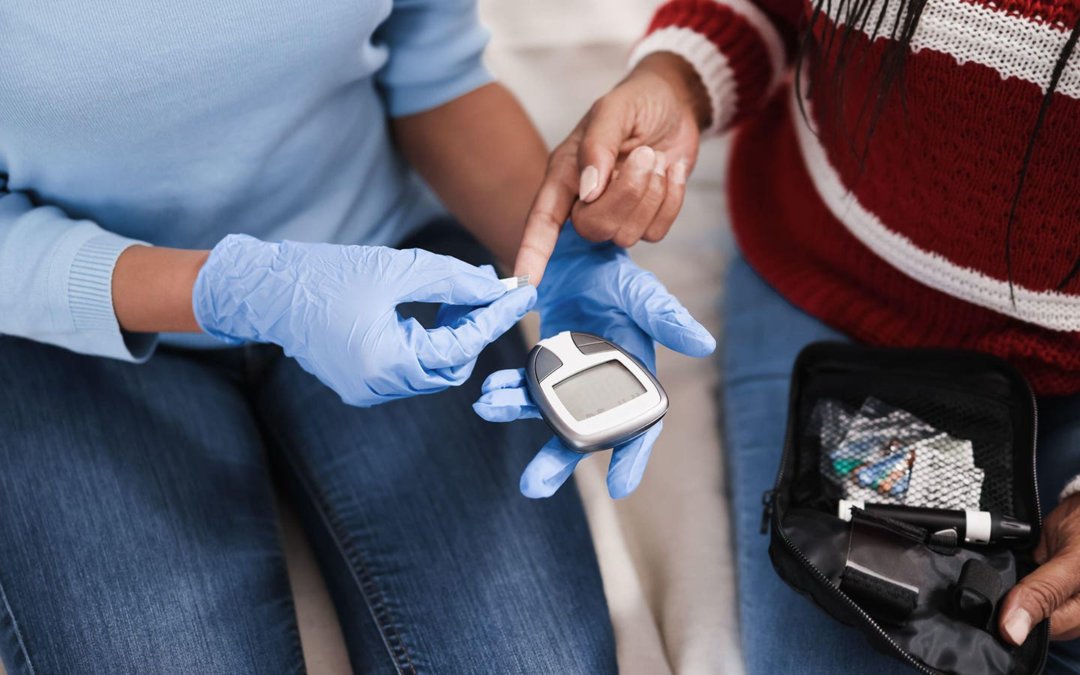March 30, 2022
Latest research published in the Lancet shows diabetes onset was higher for those with post-acute sequelae or long-haul COVID-19 however these may be preliminary results. The results came from a cohort study which used databases from the United States Department of Veterans Affairs to extract a cohort of 181,280 participants who had a positive COVID-19 test between March 1, 2020, and Sept 30, 2021, and also had survived the first 30 days of COVID-19. This was the primary exposure group. They then created a contemporary control (n=4 18,441) which included enrolled participants between March 1, 2020, and Sept 30, 2021 as well as a historical control (n=4,286,911) that enrolled participants between March 1, 2018, and Sept 30, 2019. Both control groups had no evidence of SARS-CoV-2 infection.
They made sure that participants in all three comparison groups were free of diabetes before entry into the cohort and were followed up for a median of 352 days (IQR 245–406). In terms of statistical techniques, they said they used logistic regression with “predefined and algorithmically selected high dimensional variables” to obtain predicted probabilities to creates inverse probability weights which they ended up using in a Cox proportional hazards regression, so that they could estimate post-acute COVID-19 risks of incident diabetes as well as anti-hyperglycaemic use, and finally, a composite of the two outcomes. They then quantified two measures of risk: hazard ratio (HR) and burden per 1000 people at 12 months. They did not specify if they violated the proportional hazards assumption.
They also calculated a diabetes risk score from logistic regression to predict the probability of having a composite diabetes outcome within 1 year. The risk score was built within control groups based on diabetes risk factors including age, race, sex, BMI, HbA1c, cardiovascular disease, hypertension, and hyperlipidaemia status. The risk score was then applied to the COVID-19 group to evaluate the risk of diabetes outcomes before exposure to COVID-19. The authors also did a robust sensitivity analysis by re-doing their methods in a different way.
Form their findings, during the post-acute phase of the disease, people with COVID-19 compared compared with the contemporary control group, showed an increased risk (HR 1.40, 95% CI 1.36–1.44) and excess burden (13.46, 95% CI 12.11–14.84, per 1000 people at 12 months) of incident diabetes; and an increased risk (1.85, 1.78–1.92) and excess burden (12.35, 11.36–13.38) of incident anti-hyperglycaemic use. Also, their additonal analyses to estimate the risk of a composite endpoint of incident diabetes or anti-hyperglycaemic use showed a HR of 1.46 (95% CI 1.43–1.50) and an excess burden of 18.03 (95% CI 16.59–19.51) per 1000 people at 12 months. The historical control was used for all analyses. The authors further said that the risks and burdens increased in a “graded fashion” by severity of the acute phase of COVID-19 depending upon hospitalized status and the severity of it. The results seem compelling enough and the authors suggest post-COVID care should make assessments of diabetic status.
Written by,
Usha Govindarajulu
Keywords:
COVID-19, diabetes, post-sequelae, long-haul
References
Xie Y and Al-Aly Z. (2022). “Risks and burdens of incident diabetes in long COVID: a cohort study”, The Lancet Diabetes & Endocrinology, https://doi.org/10.1016/S2213-8587(22)00044-4.
https://assets.medpagetoday.net/media/images/97xxx/97811.jpg
